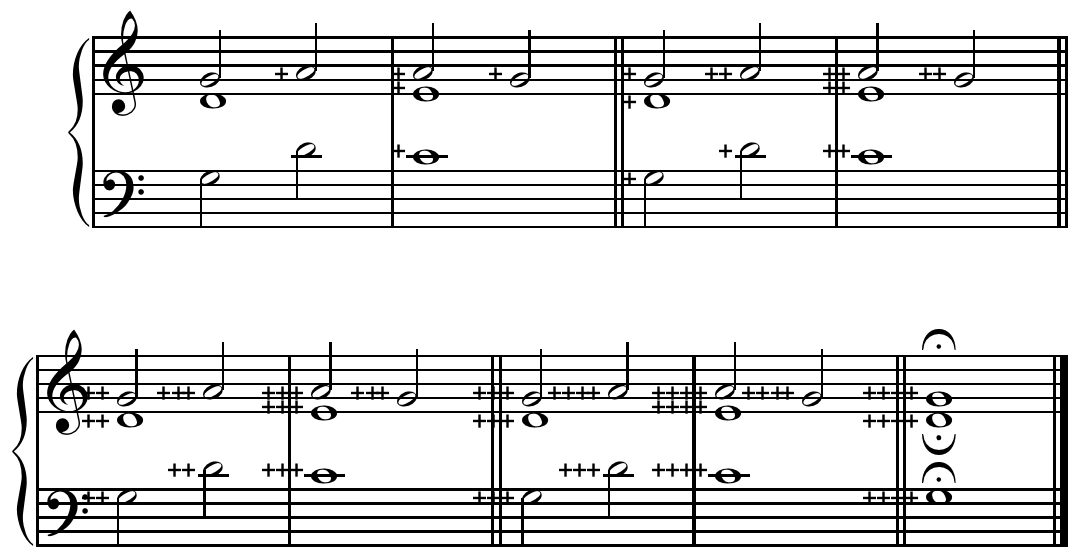comma pump on:
[Wikipedia]
[Google]
[Amazon]
In
 The most common comma pump is by the
The most common comma pump is by the
 Going around the
Going around the
music theory
Music theory is the study of the practices and possibilities of music. ''The Oxford Companion to Music'' describes three interrelated uses of the term "music theory". The first is the "rudiments", that are needed to understand music notation (ke ...
, a comma pump (or comma drift) is a sequence of notes, often a chord progression
In a musical composition, a chord progression or harmonic progression (informally chord changes, used as a plural) is a succession of chords. Chord progressions are the foundation of harmony in Western musical tradition from the common practice ...
, where the pitch shifts up or down by a comma
The comma is a punctuation mark that appears in several variants in different languages. It has the same shape as an apostrophe or single closing quotation mark () in many typefaces, but it differs from them in being placed on the baseline ...
(a small interval) every time the sequence is traversed. Comma pumps often arise from a sequence of just interval
In music, just intonation or pure intonation is the tuning of musical intervals as whole number ratios (such as 3:2 or 4:3) of frequencies. An interval tuned in this way is said to be pure, and is called a just interval. Just intervals (and c ...
s that combine to almost, but not exactly, a unison
In music, unison is two or more musical parts that sound either the same pitch or pitches separated by intervals of one or more octaves, usually at the same time. ''Rhythmic unison'' is another term for homorhythm.
Definition
Unison or per ...
(1:1 ratio).
Examples
 The most common comma pump is by the
The most common comma pump is by the syntonic comma
In music theory, the syntonic comma, also known as the chromatic diesis, the Didymean comma, the Ptolemaic comma, or the diatonic comma is a small comma type interval between two musical notes, equal to the frequency ratio 81:80 (= 1.0125) ( ...
(81:80), arising from the difference between a ditone (two 9:8 intervals, combining to 81:64) and a (just) major third (5:4). Ascending by two tones and then descending by a major third shifts pitch upwards by 81:80, and similarly for other progressions (up a fifth, down a fourth, up a fifth, down a fourth, down a major third: C G D A E C). Study of the comma pump dates back at least to the sixteenth century when the Italian scientist Giovanni Battista Benedetti composed a piece of music to illustrate syntonic comma drift. See for more.
Pythagorean comma
 Going around the
Going around the circle of fifths
In music theory, the circle of fifths is a way of organizing the 12 chromatic pitches as a sequence of perfect fifths. (This is strictly true in the standard 12-tone equal temperament system — using a different system requires one interval ...
with just fifths results in a pump by the Pythagorean comma
In musical tuning, the Pythagorean comma (or ditonic comma), named after the ancient mathematician and philosopher Pythagoras, is the small interval (or comma) existing in Pythagorean tuning between two enharmonically equivalent notes such as C ...
.
References
{{reflist Commas (music)